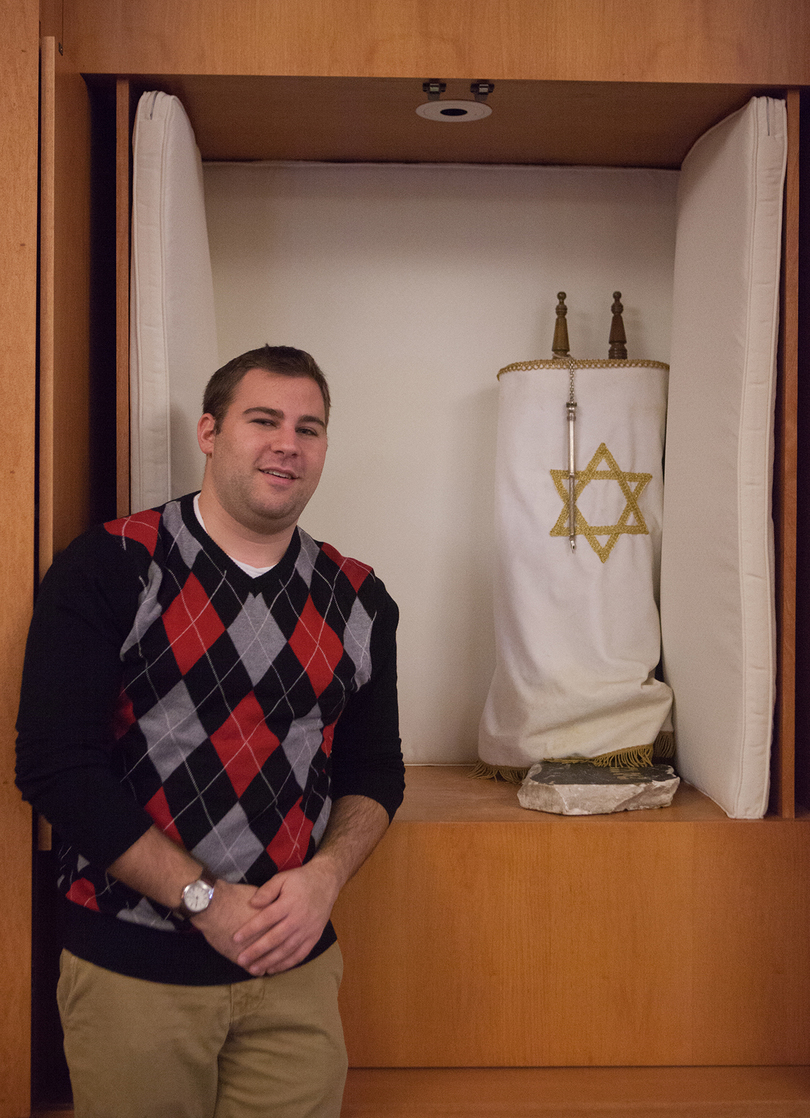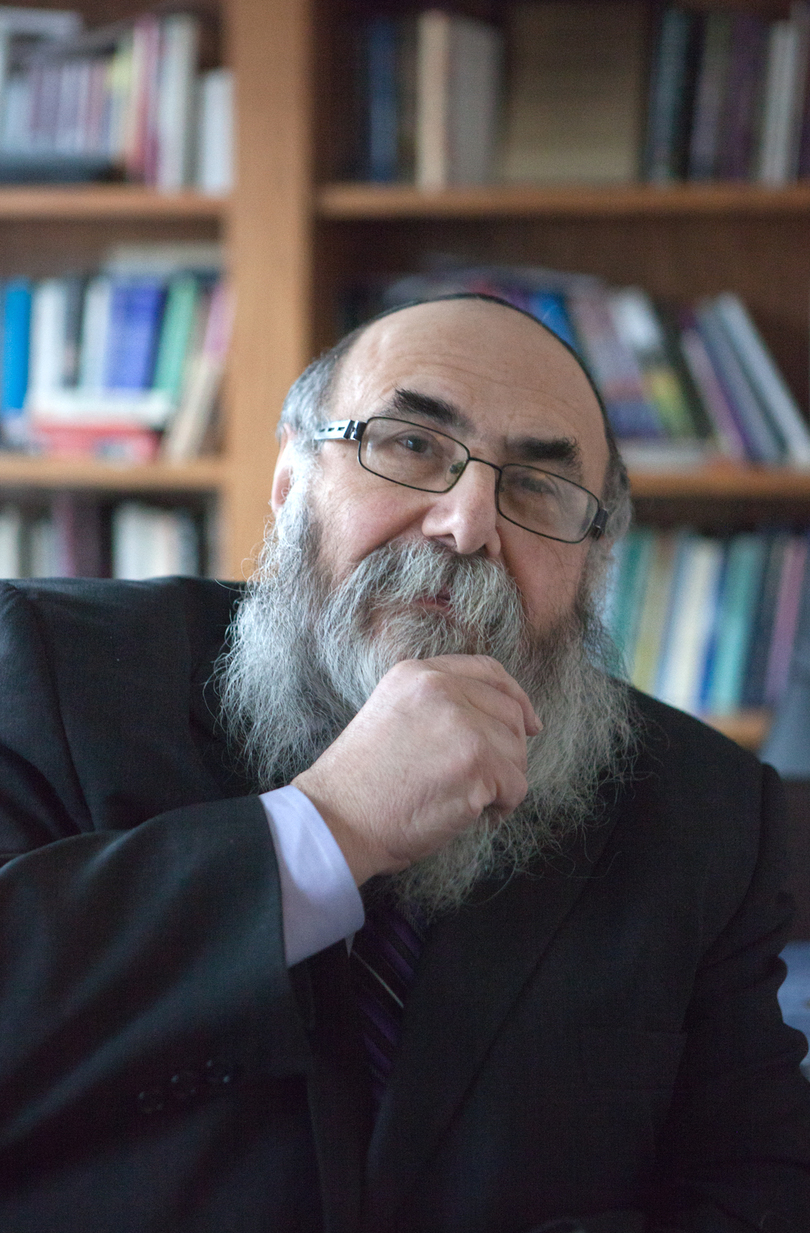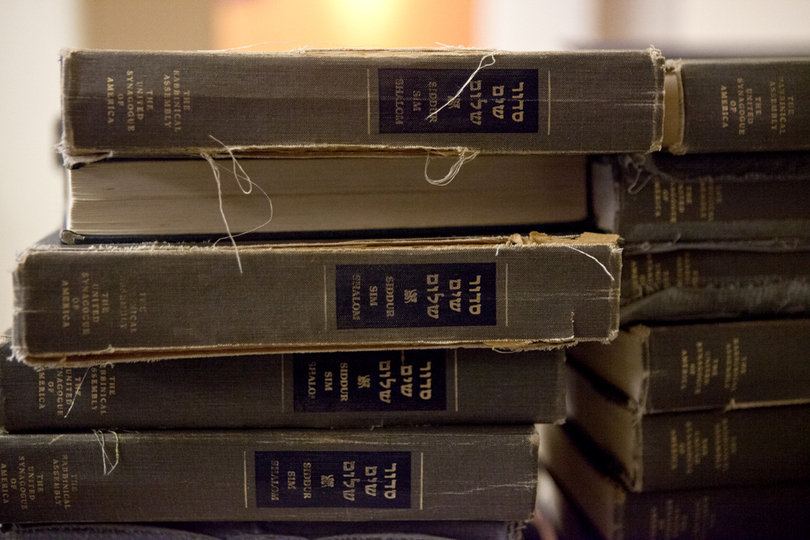When Zach Goldberg was growing up, his grandfather was always the one to lead the family seder every year on Passover.
Ten years to the day of his grandfather’s passing, it was Goldberg who led the Passover seder, his first at Syracuse University’s Winnick Hillel Center for Jewish Life.
“That was really a very meaningful experience for me. It was a very big deal,” Goldberg said. “That was a real connection I was able to make.”
Goldberg, a sophomore economics and policy studies major, is the president of the student board at Hillel. Hillel organizations are places to practice Judaism, catering primarily to reform and conservative members.
The Hillel building, located on Walnut Place, is not a temple. While an auditorium is dedicated to religious services, it serves more as a community center. A weight room, pool table in the lobby, spacious dining room and fully kosher kitchen are available to members.
The SU neighborhood is also home to the Chabad House, led by Rabbi Rapoport. The two organizations offer different types of services to Jewish students looking to practice their faiths away from home.
But Goldberg felt he identified with Hillel most. His parents had a Hillel organization when they were in college, and passed down this desire to their son.
It is the place on campus he identifies with most.
“I’m in a fraternity, but this is still where I come,” Goldberg said. “And that’s what draws a lot of students here — it feels like home.”
Goldberg pointed out that one aspect of Hillel students identify with most is the way the services are run. Many students who join Hillel went to Jewish summer camps, and the types of services felt very familiar to them, Goldberg said.
Every religious service at Hillel is entirely student-run.
Brian Small, the acting Jewish chaplain at SU and interim executive director of Hillel, finds the use of student-led services extremely significant.
“We find that it gives the students a sense of ownership,” Small said. “This is their community and they should be able to take care of their community any way that they can.”
Small is not a rabbi. Hillel does not have a rabbi as a regular member of their staff.
For Small, his involvement came as a result of his own time spent at SU. He graduated in 2002 and began working at Hillel as a program director in 2007.
“I got involved to create the Hillel program I’d always wanted as a student as an undergraduate,” Small said.
When Small was an undergraduate, Hillel was run through Hendricks Chapel. The population of Jewish students was still high, Small said, but the amount of active participants was much smaller.
Attendance has grown since Small’s tenure as an undergraduate. According to Marisa Bunis, vice president of communications on the student board at Hillel, the freshman orientation this past year held the highest attendance to date for Hillel.
For Bunis, much of the appeal of Hillel comes from its welcoming nature. Non-Jewish participants are welcome, and Hillel has held joint events with other spiritual organizations across campus, including the Muslim Student Association.
“I’ve found a great community there. I like to think we’re really welcoming,” Bunis said. “It’s really nice to have that group to go to. It’s like a family on campus.”
Bunis recalled her first Shabbat dinner at Hillel, which fell on the first Friday she spent away at college. She was reluctant to go, but was convinced by a friend. She returned week after week.
While Bunis understands the struggle of being a student and balancing faith with school, she doesn’t have much trouble finding the time.
“For me, it’s important,” Bunis said. “I love to go out and I also love going to Hillel on Friday night. And I do both.”
Several blocks away from Hillel on Ostrom Avenue is the Chabad House. While Hillel’s center is a large building, Chabad, to the untrained eye, could easily be a home. It is tucked between residential buildings, unassuming in stature.
The resident rabbi at Chabad, Rabbi Rapoport, recognizes the homelike feeling of Chabad House and embraces it.
“We have a slogan: ‘Every orange Jew’s home,’” the rabbi said with a laugh. “It offers students opportunities for services, offers opportunities for Friday night Shabbat, you can celebrate different holidays, classes, events — just a place to express their Judaism. It’s hard to do that in your dorm room sometimes.”
Rabbi Rapoport came to SU in the early 1980s, when he was asked to lead the SU Chabad House by the Lubavitcher Rebbe. He has lived in Syracuse and practiced at Chabad ever since.
The rabbi lives with his wife, Chanie, who is involved with Chabad as well. Chanie will be spending the upcoming week helping kids bake hamantaschen, a traditional cookie served to celebrate the holiday of Purim. The Chabad House will be holding a Purim party on Saturday for students.
Aviva Oskow, a senior communications design major, holds the presence of the rabbi and his wife very dear.
“They’re kind of like a set of parents at school,” Oskow said.
Oskow joined the Chabad House her junior year. She had celebrated several high holy days with Hillel, but never quite felt she fit in with the community there.
It was only after talking to a friend from home who attended the University of Minnesota that Oskow heard about the Chabad House at their campus, and she decided to look into the one at SU more closely.
Upon attending her first event at the Chabad House, Oskow immediately felt welcome. She said by the second or third time she went to the house, she was treated like a regular.
Oskow considers her faith more of a cultural part of her life, an aspect of her heritage. She is not an active Jewish practitioner, but recognizes the difficulties faced by those on campus that are.
The rabbi also empathizes with this difficulty.
“Beyond school, there’s many things happening — there’s friends, there’s boyfriend-girlfriends, the social life and sports,” the rabbi said. “There’s a lot of distractions.”
But for the student who exhibits strength in their spirituality and wants to observe it despite these distractions, the rabbi doesn’t feel that being on campus would make a difference.
As for him, the rabbi finds joy in practicing Judaism with the college-age group.
Said the rabbi, with a smile: “Students keep me young.”
This is part two of a four-part series exploring the role of spirituality in the lives of Syracuse University students. This article was published on February 20, 2013 at 3:00 am.
- Week 1: Widening the Circle: Chaplain, organization dispel Pagan stereotypes through awareness
- Week 2: Closer to Home: Life on campus provides opportunity for students to explore Judaism further, find elements of family in new venues
- Week 3: With Open Arms: Vast spiritual opportunities lie within campus Chapel; Hendricks illuminates need for diversity
- Week 4: Secular Lifestyles: Students discuss secular life, ways to practice atheist beliefs on campus






